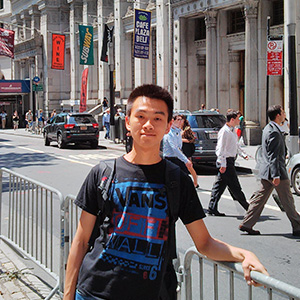Topic: Modelling and Design of Transport Networks with Electric Vehicles
EXECUTIVE SUMMARY
Carbon-based emissions and greenhouse gases (GHG) are critical global issues as addressed by the Kyoto Protocol in 1998. The transport sector is a significant contributor to GHG emissions in most countries, representing 23% of CO2 emissions from fossil fuel combustion in 2005 worldwide, while automobile transport is the principal CO2 emitter. From the energy safety point of view, the transport sector as a whole is also exceedingly affected by changes in energy resources-it is 98% dependent on fossil oil. Therefore, changes to energy structure are in urgent need to reduce emissions and oil-dependence.
Plug-in Electric Vehicles (PEV) are deemed to be a solution as a type of new alternative fuel vehicles (AFV) to reduce GHG emissions. There are a number of studies on the PEV market potential, PEV characteristic, PEV charging facility location problem and PEV routing problem. Given the current scarce deployment of charging facilities and driving range limit, it is crucial for PEV drivers to choose the best route to fulfil their trips while satisfying the charging needs. However, previous studies on PEV routing problems did not consider the stochasticity of travellers. The drivers’ perception errors on the predicted travel time should be accounted for, which is addressed in this study into the PEV routing problems. Hence, a stochastic user equilibrium (SUE) model is needed to perform better on predicting the routing behaviour of PEV drivers. With the more rational SUE model, we could then investigate about the charging facility location problem for the PEV. Battery swapping station (BSS) has much more advantages, such as fast swapping process, than battery charging station (BCS), especially when operating with battery distribution centre (BDC). Range anxiety results from that the EV drivers may worry about running out of energy before reaching the destination or charging station and affects EV drivers’ route choice. Another unsolved problem related to charging process is the lack of compatibility of different chargers plugs. Standardization of charging plugs on a worldwide level is still in urgent need. In other words, there exist multi-class EV charging stations as well as corresponding EV users now.
To achieve this overall research aim, four consecutive stages of work have been proposed. The first stage is the review of relevant literature on PEV’s demand and characteristics, its users’ behaviour, the charging facility location problem, and the traffic assignment problem with relay requirements. In the second stage, the stochastic traffic assignment model of EV with path distance constraints is studied, which imposes an upper bound on the path length that an EV can travel without charging during the trip. Multi-class users and elastic demand are considered in the extensions as well and range anxiety is considered as a stochastic term among the user groups.
The third stage is study of EV BSS network design problem with BDC. It aims to design the BSS network along the corridors to minimize the total cost of locating these facilities to the candidate sites. In the meanwhile, the requirements that there exists a path linking each origin-destination (O-D) pair in which the length between the origin and the first BSS, the BSS and the destination, or any two consecutive BSS does not exceed a pre-set upper bound satisfying should be satisfied. This stage starts with studying one OD pair case along a corridor and then extends to the whole transport network. Multi-class EV users and BSS will also be considered as model extensions.
Models and algorithms of the preliminary work are also presented. Finally, the report concludes with the contribution to research and proposed means of communicating the results of the research.
 Jenny Gated Community
Jenny Gated Community Emily Gated Community
Emily Gated Community Lily Gated Community
Lily Gated Community Bonnie Gated Community
Bonnie Gated Community Chaoqun Song Gated Community
Chaoqun Song Gated Community Weiwei Road Rage
Weiwei Road Rage Philip Road Rage
Philip Road Rage Catherine Road Rage
Catherine Road Rage Kevin Road Rage
Kevin Road Rage Dongsheng Hua Road Rage
Dongsheng Hua Road Rage Tom Data Science - R
Tom Data Science - R Bo Data Science - R
Bo Data Science - R Rocker Data Science - R
Rocker Data Science - R Jin Data Science - Python
Jin Data Science - Python Lillian Complex Network
Lillian Complex Network Christine Complex Network
Christine Complex Network Weijie Chen Data Science
Weijie Chen Data Science Annie Safety & Survey
Annie Safety & Survey Ray Safety - Statistical
Ray Safety - Statistical Alina Safety - SEM
Alina Safety - SEM Jessica Simulation
Jessica Simulation Felix Survey
Felix Survey





















